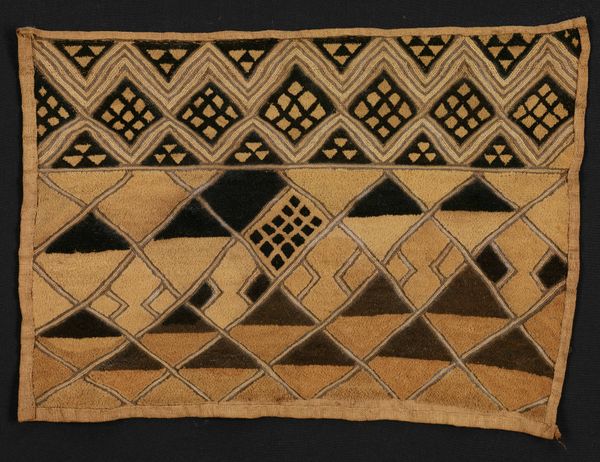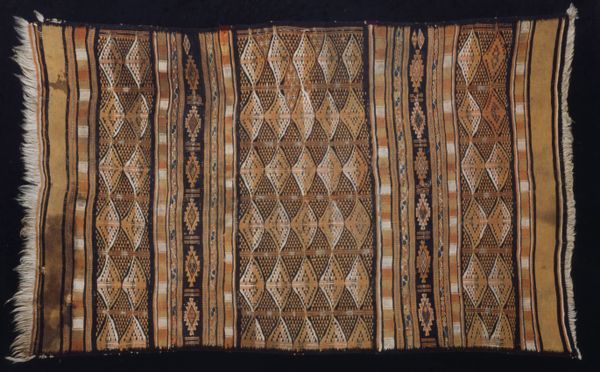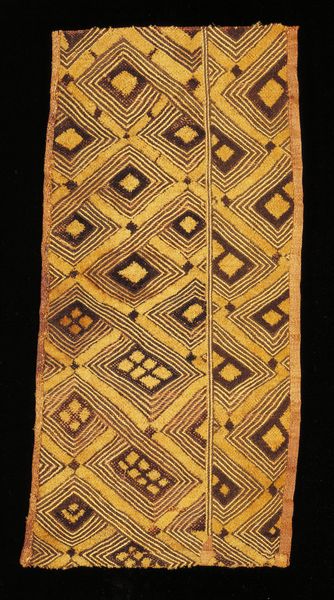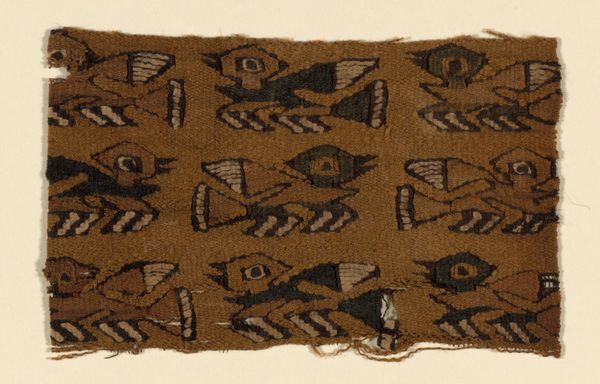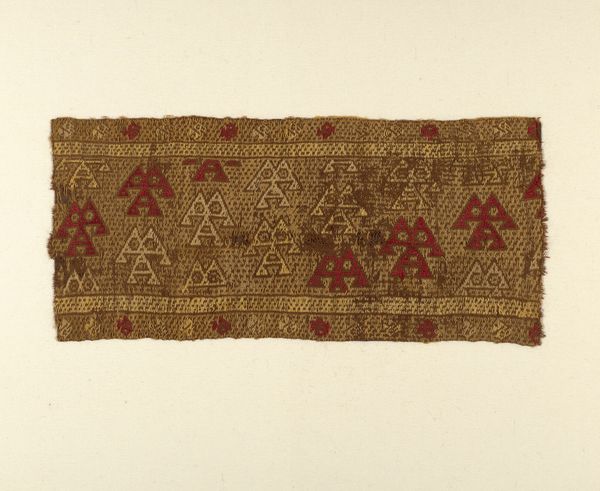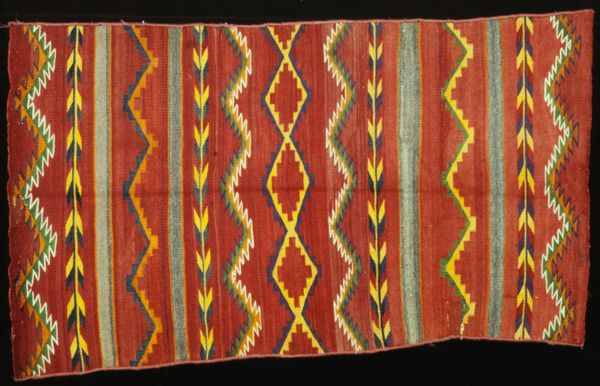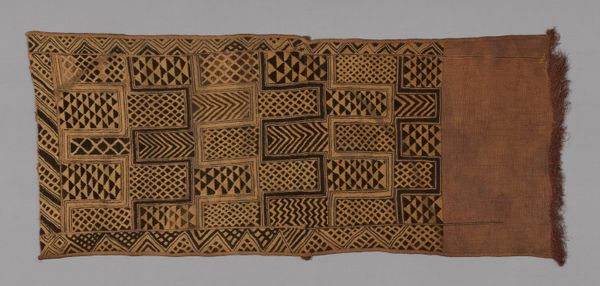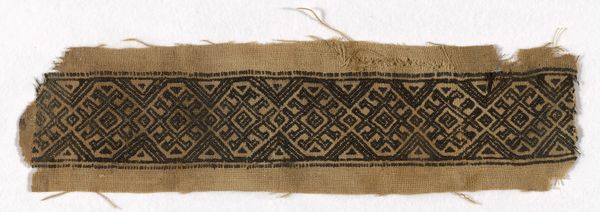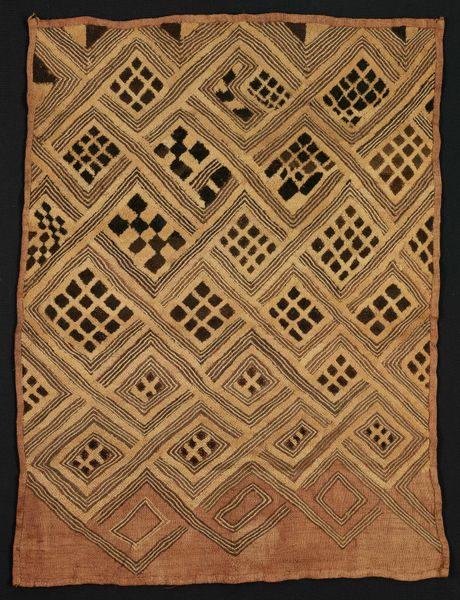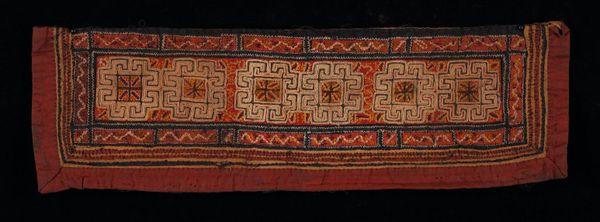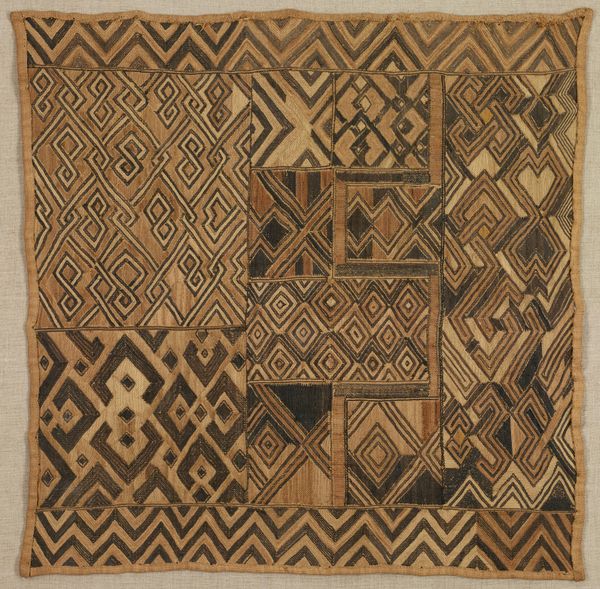
panel, textile
#
african-art
#
panel
#
textile
#
geometric
Dimensions: 24 x 21 5/8 in. (60.96 x 54.93 cm)
Copyright: Public Domain
Editor: We're looking at a Kuba textile panel, probably from the mid-20th century. The piece is filled with geometric designs. The browns and blacks are so warm, and it reminds me of a beautiful, intricate quilt. How would you interpret this work, especially in its historical context? Curator: This panel invites us to consider the complex social structures of the Kuba Kingdom. Kuba textiles were far more than decorative; they were a form of visual language, conveying status, history, and cosmology. Do you see how the variations in pattern and texture create a sense of both unity and diversity? Editor: Yes, now that you mention it, the differences between each square, even using the same elements, stand out! It’s incredible. Curator: These weren't arbitrary choices. Specific motifs were linked to lineage, social standing, or even gender roles. For instance, certain geometric patterns may have been reserved for royalty. Thinking about this, how does this change the way you appreciate its beauty? Editor: It gives a new depth to it, it moves from a visual complexity, to a codified language that represents societal relationships. Were the makers intending to share all that information with just anyone? Curator: Perhaps not all at once. The meaning may have unfolded through observation, apprenticeship, and cultural immersion. Kuba textiles are still active carriers of memory, resisting colonial erasure, and asserting cultural continuity. Editor: That’s a very empowering interpretation, and it reframes the work. Thank you for your perspective. Curator: Thank you for your insights. These panels teach us about identity and resistance.
Comments
minneapolisinstituteofart about 2 years ago
⋮
The designers of Kuba textiles, traditionally women, are driven by technical skill, patience, and creativity. And the experimentation and innovation comes through in their strikingly original works. These three panels are constructed entirely from raffia palm fiber; the two smaller panels are embroidered in a technique that mimics woven velvet. Thousands of tiny stitches are looped and cut to create a dense, raised texture. The panel at the lower left, not yet complete, reveals the time-consuming process. The larger of the three panels is embellished with appliquéd shapes. Several panels are joined together, perhaps the start of a larger project. Many Kuba textiles are joined in this way to form 12-feet-long—or longer—cloths, which are wrapped around a woman’s body to form a layered skirt.
Join the conversation
Join millions of artists and users on Artera today and experience the ultimate creative platform.
